
Embracing self-care is a core strategy for anyone dedicated to maintaining long-term recovery and containing setbacks. Self-care strategies for preventing relapse are necessary for sustaining health and wellness after rehabilitation. Proactive self-management includes regular exercise, sufficient sleep, and healthy dietary habits that fortify mental and physical resilience against potential relapse triggers. This paragraph also sets the stage for an in-depth exploration of practical self-care techniques that support recovery. These strategies help individuals manage stress, recognize early warning signs of emotional distress, and maintain a balanced lifestyle. Throughout this post, we will discuss how integrating simple self-care routines can profoundly impact one's ability to stay on the path of recovery, highlighting several methods to enhance well-being and prevent relapse effectively.
Understanding Relapse: A Key Step in Prevention
Relapse refers to the return to substance use after a period of abstinence, which can be a part of many people's long-term recovery process. Recognizing the triggers and stressors that lead to relapse is essential for anyone looking to maintain their sobriety. These triggers often include emotional distress, environmental cues linked to past substance use, or social pressures.
Self-awareness involves being conscious of the feelings and external situations that pose a risk for relapse. By acknowledging these warning signs early, individuals can take proactive steps to manage their responses to these triggers. It might involve seeking support from peers or counselors, engaging in healthy activities, or utilizing coping strategies learned during therapy. Increasing self-awareness helps individuals anticipate challenges and arm themselves with the tools needed to navigate them, maintaining their commitment to recovery.
Self-Care Strategies for Preventing Relapse
Implementing strategies that bolster physical and mental health reduces the risk of returning to old habits. Engaging in physical activities is a powerful tool for managing stress and enhancing overall health. Activities such as brisk walking, jogging, or swimming will improve cardiovascular health while boosting mood through endorphin release. Incorporating mental health practices like mindfulness and meditation into daily life is equally vital. These practices help center thoughts, reduce anxiety, and improve emotional regulation, creating a more resilient mindset capable of handling potential stressors that might trigger a relapse.
Furthermore, maintaining regular sleep patterns and adhering to a nutritious diet is essential for a comprehensive self-care regimen. Consistent, restorative sleep and balanced meals ensure that the body and mind are well-nourished and primed to tackle challenges, reducing susceptibility to stress-induced relapse. Together, these self-care strategies form a robust defense against relapse, fostering long-term recovery and stability.

Building a Support Network: Essential for Longevity
Building a robust support network is another critical component of self-care strategies for preventing relapse. Choosing the right support group or network can be transformative. Look for groups with similar experiences and recovery goals, as this alignment can provide more relevant advice and empathetic understanding. Family and friends' support can offer emotional comfort and practical help during challenging times. They should learn the best ways to support their loved ones in recovery. It may include participating in family therapy sessions or educational programs.
Additionally, using professional help is a cornerstone of a successful recovery strategy. Therapists and counselors trained in addiction recovery can offer guidance, monitor progress, and help navigate the complexities of maintaining sobriety. This professional support is essential for dealing with underlying issues that contribute to substance use and for learning new coping strategies to prevent relapse.
Avoiding High-Risk Situations
Being aware of the most common relapse triggers, such as exposure to substances, stress from interpersonal conflicts, or attendance at high-pressure social events, enables you to steer clear of potential pitfalls. Developing a keen sense of these triggers and the ability to predict high-risk situations before they occur will help you build a robust recovery strategy.
To manage temptations and avoid risky environments:
● Stay away from old haunts and routines: Alter your routes and habits that were part of your past substance use.
● Use refusal skills: Practice saying no in a convincing, respectful manner.
● Engage in alternative activities: Fill your time with hobbies and interests that do not involve substances.
Furthermore, having a solid exit plan empowers you to leave unsafe or uncomfortable situations without hesitation. This plan can be as simple as having a friend on call, knowing nearby safe locations, or even rehearsing reasons to leave risky scenarios.

Monitoring Progress and Setting Realistic Goals
Monitoring progress and setting realistic goals are fundamental to sustaining recovery and preventing relapse. Keeping a journal to track progress allows individuals to reflect on their successes and areas for improvement, providing a tangible record of their journey toward recovery.
Setting achievable and meaningful goals is crucial. Goals should be specific, measurable, attainable, relevant, and time-bound (SMART). For example, a goal might be to attend a support group meeting twice a week or to practice meditation for 15 minutes daily. These goals help structure daily life and give a sense of direction.
Celebrating milestones, whether big or small, acts as a motivational tool. Acknowledging these achievements boosts self-esteem and reinforces the value of the hard work put into recovery. Celebrations can be as simple as a quiet evening at home or as lively as a gathering with close friends or supporters.

Adapting Your Strategies Over Time
Adapting your strategies over time is crucial in maintaining effective self-care and preventing relapse. Recognizing when you need adjustments in your self-care plan allows you to remain aligned with your current needs and challenges. Life circumstances can change, and what works at one stage may not be as effective later. Be flexible and responsive to these changes to sustain recovery. Staying adaptable involves periodically reviewing your strategies and being open to modifying them. For instance, if your stress levels are increasing despite your current routine, it may be time to introduce new activities or support mechanisms that better address your needs.
Learning from setbacks without self-judgment is also vital. Viewing mistakes as learning opportunities rather than failures helps to foster resilience. It's important to approach these moments with kindness and understanding towards yourself, which encourages personal growth and helps prevent discouragement and relapse.
Conclusion
Maintaining balance and health is essential in making self-care strategies for preventing relapse, which is the ongoing process of recovery and relapse prevention. This article has highlighted critical self-care strategies for preventing relapse and supporting mental and physical well-being. Regular exercise, mindfulness practices, and a robust support network are just a few methods that can enhance your resilience. Finally, we encourage you to continue prioritizing these self-care measures, adapting them as your circumstances evolve. Start implementing these strategies today to strengthen your recovery journey. Your commitment to self-care is not just beneficial—it's necessary for a balanced and healthy life.

Codependency is a complex and often misunderstood concept that can have detrimental effects on one's well-being. People who are codependent are known for their relentless drive to please others. They often do this at the expense of their own needs and desires. This can lead to a variety of negative outcomes, including low self-esteem, insecurity, and a loss of personal identity. In this blog post, we will explore the signs of codependency and discuss how to recognize and address this harmful pattern of behavior.
Understanding Codependency in Depth
Codependency extends beyond mere people-pleasing tendencies. It roots itself in an emotional and psychological condition where individuals find their self-worth and identity predominantly through the validation and approval of others. Codependent relationships can be between friends, romantic partners, or family members. This condition often stems from deeply ingrained beliefs about self-worth and can be traced back to childhood experiences. This is usually where the seeds of such behavior patterns are planted. In codependent relationships, there is a disproportionate level of giving over receiving. One party often neglects their own needs, desires, and well-being to satisfy the other.
This imbalance leads to a cycle of behavior that reinforces the codependent's belief that their value is intrinsically linked to how much they can support or be of service to others, regardless of the personal cost. Such relationships are not confined to romantic partnerships. It can also be observed in familial dynamics and friendships, illustrating the pervasive nature of codependency across various aspects of an individual's life.
The Pleaser's Plight: Recognizing Your Codependent Patterns

Individuals caught in the web of codependency often find themselves in a relentless pursuit of others' happiness. This is at a significant cost to their own happiness. This relentless drive to accommodate and please can lead to an unhealthy cycle. A cycle where the person's sense of accomplishment and satisfaction is solely derived from the approval and contentment of others. Such individuals may experience difficulty in saying 'no', driven by an underlying fear of rejection or disappointing those they care about.
This pattern not only exhausts them but also prevents them from attending to their own needs and aspirations.
An individual might notice that they're constantly overextending themselves. They notice feeling a compulsion to fix problems for others, and experiencing guilt when prioritizing themselves. This behavior fosters a perilous dependency on external validation, leaving little room for personal development or self-care. The realization of these patterns is crucial for breaking free from the cycle of codependency, steering towards a journey of self-discovery and empowerment.
Key Signs of Codependency to Watch For

Most codependent relationships involve some form of underlying dysfunction. Identifying codependency involves recognizing various symptomatic behaviors and emotional responses that signify an unhealthy reliance on others for self-esteem and validation. One of the hallmark signs is an entrenched pattern of sacrifice. This is where an individual's sense of worth is disproportionately tied to the extent they can cater to the needs of others.
This often coincides with a compulsive need for approval, where constant reassurance and validation from others are sought to feel valued and secure. Additionally, individuals may struggle with boundary setting. They might exhibit an inability to assert their needs or say 'no', often resulting in resentment and personal neglect.
Another indicative sign is the prioritization of others' needs to the detriment of one's self-care. This neglect can manifest in ignoring personal health, interests, and well-being because the person is too preoccupied with tending to someone else. Furthermore, a pervasive fear of abandonment can drive codependent behaviors. Individuals sometimes go to great lengths to avoid rejection or being alone, even if it means staying in harmful situations or relationships. These signs point towards an underlying issue where individuals have tethered their identity and self-worth to their ability to please and be needed by others. It highlights the need for intervention and support to shift towards more balanced and healthy relational dynamics.
The Impact of Codependency on Self-Esteem and Personal Growth
The ramifications of codependency extend deeply into one's sense of self and capacity for personal development. Those ensnared by codependent behaviors often find their self-esteem eroded. Their measure of worth becomes inextricably linked to the validation and satisfaction of others. This dependency on external affirmation leads to a fragile self-concept, vulnerable to the whims and opinions of those around them. As a consequence, the ability to pursue personal interests, ambitions, and growth is markedly stifled. In prioritizing the needs and desires of others above their own, individuals may neglect their personal evolution. They may miss opportunities for advancement and self-improvement. The entanglement in others' lives limits the exploration of personal passions, talents, and the pursuit of goals that are essential for a fulfilling and autonomous life. This neglect not only diminishes self-esteem but also curtails the rich, expansive journey of personal growth that defines a well-rounded and satisfying existence.
Moving Forward: Steps to Overcome Codependency
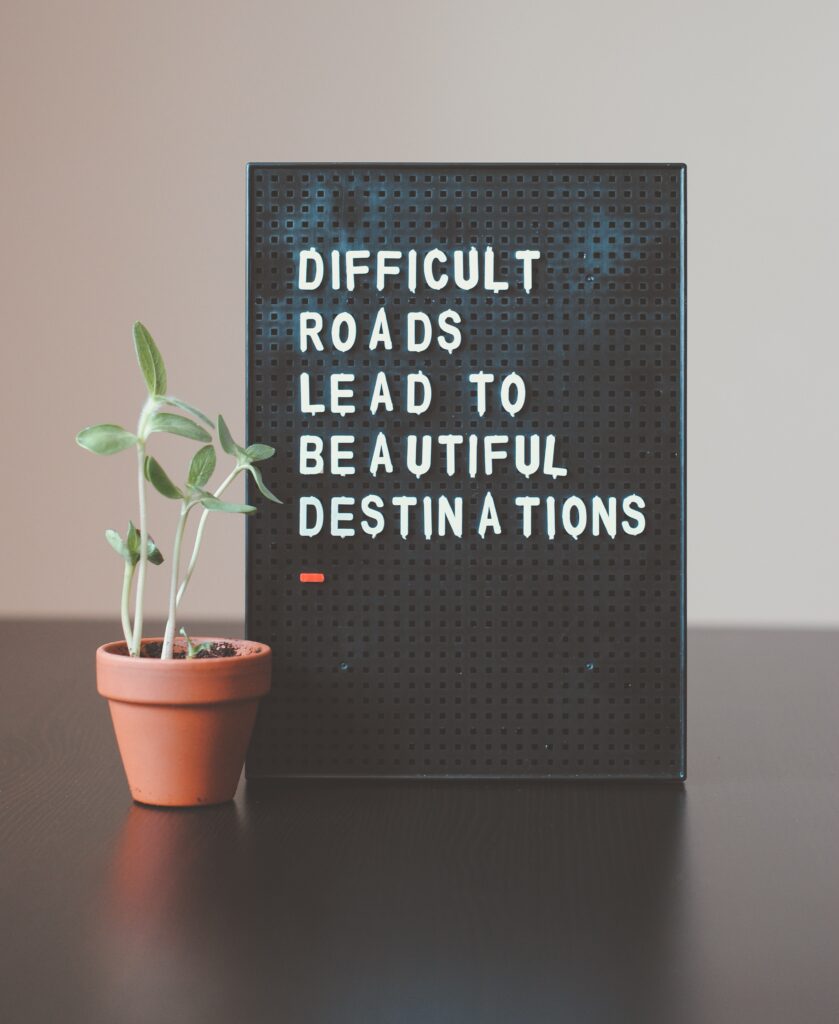
Navigating the path to freedom from codependent behaviors begins with an awareness of the patterns that have held you captive. The journey involves introspection, commitment, and actionable strategies that foster independence and self-love. Engaging in therapy or counseling plays a pivotal role, offering a safe space to unearth the origins of codependency. It can also equip you with strategies to build resilience and healthier relationships. Emphasizing the importance of boundary setting is crucial. It allows you to communicate your needs and limits clearly, safeguarding your emotional well-being. Prioritizing self-care cannot be overstated—it's essential to nourish your body, mind, and spirit, creating a foundation of strength and self-respect.
Cultivating a robust sense of self that stands independently of others' perceptions or validation is another vital step. This might involve exploring new hobbies, reconnecting with forgotten passions, or simply spending time in solitude to better understand yourself. Additionally, surrounding yourself with a supportive network that honors your boundaries and champions your growth is instrumental in reinforcing the changes you are striving to make. These steps, though challenging, pave the way toward a life characterized by healthy relationships and a deep-seated sense of self-worth. Embrace the process, and remember, each step forward is a step toward a more empowered and authentic you.

Have you ever experienced the strong desire to forge your own path, only to hesitate for fear of losing your faith or alienating yourself from your community? Do you wrestle with doubts about the legitimacy of your emotions or find it challenging to rely on yourself? Perhaps you've also encountered situations where affection or gratitude felt strangely detached or unreachable. Such experiences are not uncommon for individuals grappling with the aftermath of religious trauma, where the path to self-discovery often feels fraught with conflict between personal growth and communal belonging.
Understanding Religious Trauma
Religious trauma is a deeply impactful form of emotional and psychological injury. It is trauma that arises from harmful experiences within a religious context. Individuals may suffer from religious trauma due to a variety of reasons. These may be exposure to toxic doctrines, manipulation, spiritual abuse, or the rejection by their faith community. This trauma often manifests as intense feelings of guilt, profound shame, or pervasive fear. A person can feel an enduring loss of trust in both oneself and in higher powers.
The damage inflicted by religious trauma can profoundly affect one’s emotional well-being. Its can lead to a disconnection from personal emotions and a pervasive sense of unworthiness. Such experiences challenge the core of an individual's identity and beliefs, creating inner turmoil and conflict that can persist without intervention. In some settings, the symptoms of religious trauma can be similar to those of complex post-traumatic stress disorder (C-PTSD).
An Introduction to Internal Family Systems (IFS)

Internal Family Systems (IFS) stands out as a revolutionary psychotherapeutic approach designed to foster self-awareness and healing. It has a wide range of applications that can be used in healing trauma. At its core, IFS posits that the mind is naturally segmented into multiple sub-personalities, or "parts." These parts each have their unique viewpoints, emotions, and memories. They often take on distinct roles within the psyche, such as protectors, managers, and exiles.
Each of these categories plays a pivotal role in our mental ecosystem. Protectors and managers work to shield the individual from pain and maintain daily function. Exiles carry burdens of trauma and pain. Both of these examples are frequently a result of adverse experiences such as religious trauma.
What sets IFS apart is its holistic focus on the individual's "Self," the essence of who they are beyond their parts. The Self is characterized by its innate capacity for compassion, clarity, courage, and connectedness. Through the IFS process, individuals are encouraged to assume a leadership role within their internal system, guiding their parts with kindness and understanding. This therapeutic journey involves identifying and addressing the parts that have been hurt or have taken on extreme roles due to religious trauma, thereby restoring balance and promoting psychological healing. By fostering an internal environment of empathy and acceptance, IFS enables individuals to embark on a path toward lasting recovery and self-discovery, transforming the way they relate to themselves and their past experiences.
How IFS Addresses Religious Trauma
In the context of healing from religious trauma, IFS offers a powerful and empathetic approach. It facilitates a deep connection with the wounded parts of the psyche that harbor the scars of religious abuse, neglect, or misunderstanding. Through IFS, individuals learn to approach these vulnerable aspects of themselves with the compassion and empathy they might have been denied in their religious experiences. By fostering an environment where no part is judged and every feeling is validated, the process enables the person to safely explore the impact of their trauma.
Importantly, IFS assists in distinguishing between one's faith and the harmful interpretations or applications of it that caused pain, allowing for a nuanced understanding of one's beliefs and values. This nuanced exploration encourages the reevaluation of beliefs in a way that honors one's inner truth and facilitates a healing reconnection with one’s spiritual self. As such, IFS does not seek to change one’s relationship with their faith directly but rather to heal the internal wounds inflicted by traumatic religious experiences. This approach empowers individuals to redefine their spiritual path on their own terms, leading to a more authentic and fulfilling spiritual life.
The Role of the Self in Healing

In the healing journey through IFS, the Self is instrumental, acting as an internal healing agent that navigates and integrates the various parts of an individual's psyche. This pivotal role involves leveraging the Self's inherent qualities of compassion, clarity, courage, and connectedness to embrace and soothe the parts that have been damaged or are carrying heavy burdens due to religious trauma.
The engagement of the Self allows for a unique therapeutic dialogue within the person, where wounded parts are heard, acknowledged, and understood without judgment.
Through this process, individuals discover an internal safe space where they can address their trauma directly, offering the wounded parts the empathy and acceptance they may have missed. This empowerment by the Self fosters a profound internal healing environment, promoting a reconciliation of conflicting internal elements and leading to a harmonious state of being. Engaging the Self in this manner not only facilitates the healing of religious trauma but also enhances the individual’s overall resilience, self-esteem, and emotional equilibrium.
Practical Steps to Begin Healing with IFS
Embarking on the healing journey with Internal Family Systems (IFS) in the wake of religious trauma requires a thoughtful approach. Your first step should be seeking out a qualified therapist skilled in IFS, with a strong background in addressing religious trauma. This professional can guide you through the nuanced process of getting acquainted with your internal parts, especially those carrying the weight of your trauma. They'll facilitate conversations that enable you to approach these parts with curiosity, compassion, and empathy.
Engaging in regular therapy sessions provides a structured environment where you can safely explore the depths of your experiences and begin the process of healing. Additionally, engaging in self-led IFS exercises, recommended by your therapist, can deepen your understanding and foster an ongoing dialogue with your internal family. Journaling about your thoughts, feelings, and discoveries after each session can also enhance your healing journey, providing clarity and insight into your progress. Embracing this path with patience and an open heart will gradually illuminate the way to reconciliation and peace within yourself, allowing you to redefine your spiritual beliefs and identity on your own terms.
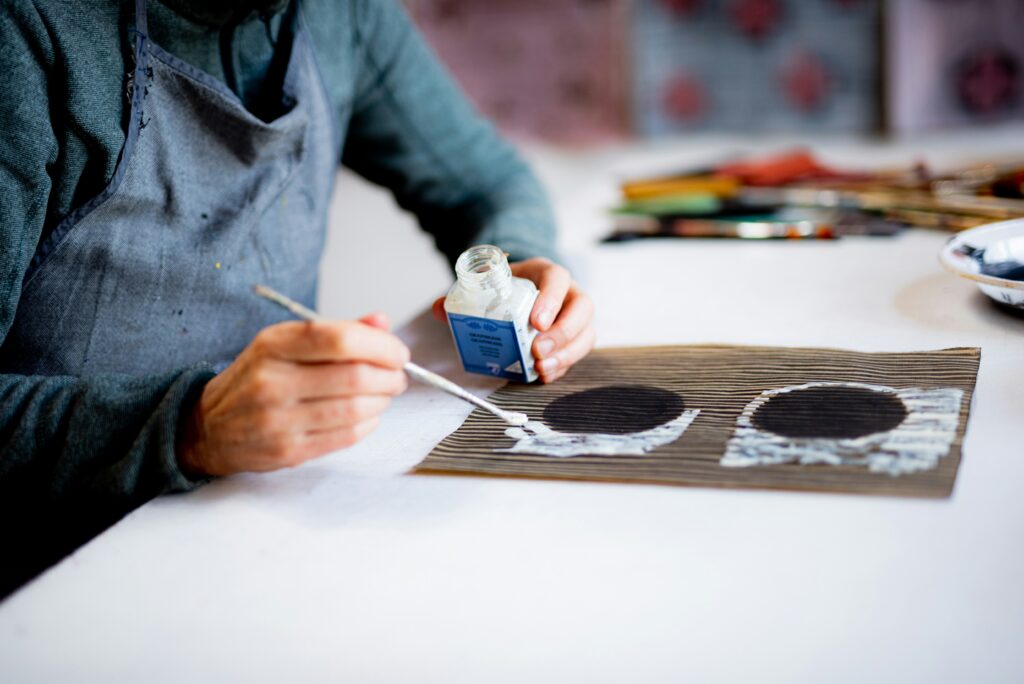
Art therapy is a powerful tool that often goes unrecognized in the world of mental health treatment. This form of therapy utilizes the creative process of making art to improve a person's physical, mental, and emotional well-being. When traditional talk therapy fails to adequately address deep-seated trauma, art therapy steps in to provide a unique outlet for expression and healing. In this blog post, we will explore the role of art therapy in the context of Eye Movement Desensitization and Reprocessing (EMDR) therapy, a widely-used approach for treating trauma and other psychological issues.
Understanding Art Therapy and Its Foundations
At its core, art therapy is built on the premise that engaging in the act of creating art is inherently therapeutic. It can foster personal growth, healing, and mental wellness. This therapeutic discipline offers a distinctive path for individuals to delve into their subconscious. Art enables them to uncover and address emotions and conflicts that might be challenging to express through words alone. It operates on the understanding that the creative process, as a form of nonverbal communication, has the unique capacity to reveal and work through complex emotional experiences.
\As participants navigate through various art-making techniques, they are provided with the opportunity to visualize their emotional landscape, guided by an Art Therapist. Hopefully, this may lead to profound insights and transformative healing experiences. This approach to therapy is especially beneficial for individuals who find conventional verbal communication limiting. Some people may feel it is even inadequate in expressing the depth of their internal experiences. Through art, they are able to articulate the inexpressible, facilitating a deeper connection with their own emotional realities, making it great for those struggling with words.
The Synergy Between Art Therapy and EMDR Therapy
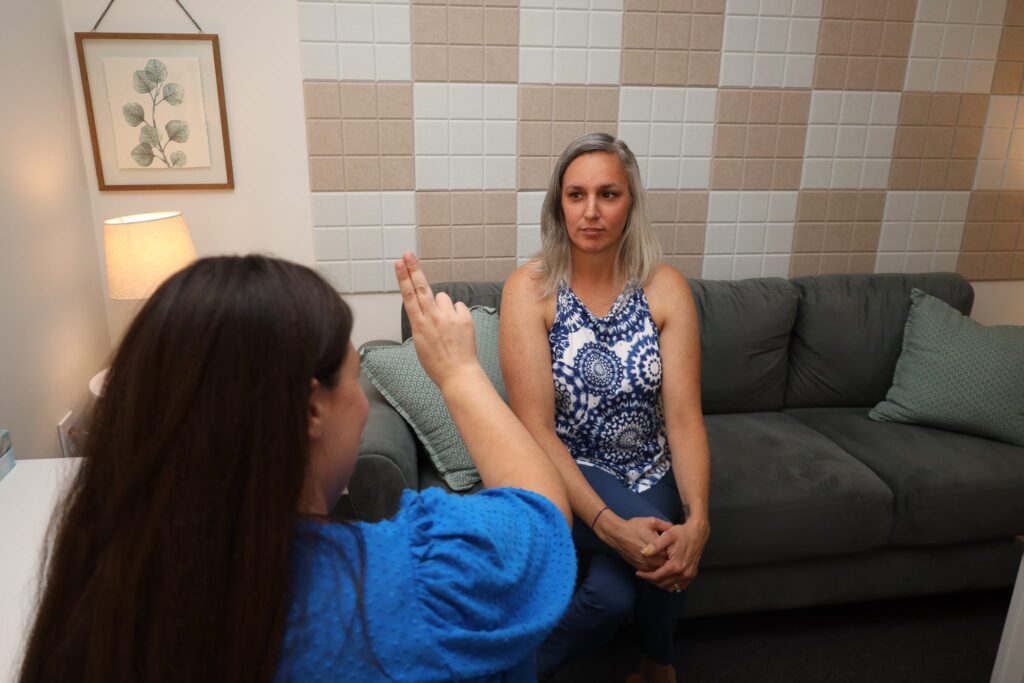
The convergence of art therapy and EMDR creates a powerful alliance for tackling mental health issues like PTSD and anxiety, fitting different individual needs. This integrated approach facilitates a deeper engagement with the therapeutic process. It allows clients to unlock and process traumatic memories in a multifaceted manner.
While EMDR therapy focuses on desensitizing and reprocessing memories through bilateral stimulation, art therapy adds a layer of expressive richness. It provides a visual and tactile medium through which clients can explore and articulate their experiences.
The synergy of these therapies enhances emotional insight and healing. This is done by leveraging the strengths of each modality. EMDR's structured approach to trauma processing is complemented by the fluid and expansive nature of artistic expression. This combination broadens the avenues for understanding and healing, as well as caters to diverse needs and preferences, making therapy accessible to more individuals. By melding the cognitive with the creative, this integrated therapeutic approach opens up a dynamic space for healing, where emotions and memories can be navigated in a holistic and person-centered manner.
Art Therapy as a Safe Haven for Emotional Expression
Art therapy creates a nurturing and secure environment that enables individuals to delve into and express complex emotions with ease and without judgment. This method supports clients in accessing and articulating feelings that are otherwise hard to reach through more conventional therapeutic approaches. The process of making art in itself can be a profoundly healing act, offering a unique way to express emotions that might not be fully understood or verbalized. It invites an exploration of one's inner self, allowing for a non-verbal dialogue between the conscious and subconscious.
Through various artistic mediums, individuals can portray their emotions, experiences, and memories. Doing this fosters a sense of ownership and control over their healing journey. The tactile experience of handling art materials can also be soothing and grounding, providing a physical way to manage and express difficult emotions. In this respect, art therapy stands as a beacon of hope and solace for those navigating the complexities of healing from trauma. It can offer a path towards emotional clarity and relief that transcends the limitations of spoken language.
Enhancing the EMDR Process Through Art

Incorporating art therapy into EMDR therapy serves as a bridge to further facilitate the processing of traumatic memories. This integration allows individuals to symbolically represent their trauma, emotions, and recovery journey through art, offering a visual language for what might be too difficult to articulate with words. By engaging in artistic creation, clients can externalize their internal emotional struggles, making them more tangible and manageable.
This aids in the desensitization phase of EMDR and enriches the reprocessing phase. Clients can visually map out and reframe their experiences. The interplay between visual art and EMDR techniques fosters a comprehensive healing environment that honors both the cognitive and creative aspects of recovery. Through the use of art, individuals are empowered to navigate their healing process with a renewed sense of agency and creativity. It can potentially unlock deeper levels of emotional insight. This innovative approach underscores the adaptability and resilience of the human spirit. It offers a profound medium for transformation and growth within the context of trauma therapy.
Practical Approaches to Integrating Art Therapy with EMDR
To effectively weave art therapy into the framework of EMDR therapy, therapists can employ a variety of strategies tailored to enhance the therapeutic experience and foster deeper emotional healing. One practical approach involves inviting clients to engage in art-making activities directly before or after an EMDR session. This technique can serve as a powerful tool for clients to prepare mentally and emotionally for EMDR or to decompress and process their feelings afterward.
During EMDR sessions, therapists might also introduce art-based interventions. This is done as a means to facilitate the expression and processing of difficult emotions that arise. For instance, clients may be encouraged to draw or paint their emotional responses to EMDR prompts. Doing the art allows them to capture and explore their feelings in a tangible form. Additionally, art can be used to symbolize the transformation of negative beliefs into positive ones, helping clients visualize their journey towards healing in a concrete way.
Another approach includes utilizing art as a medium for clients to express their narrative or story. It provides a visual representation of their trauma and its impact on their life. This can be particularly useful in the reprocessing phases of EMDR, where understanding and reframing of past experiences is crucial.
By incorporating these practical art therapy techniques within EMDR sessions, therapists can offer a multi-layered healing experience that addresses the emotional and cognitive aspects of trauma, fostering a deeper, more holistic recovery process.

Dating can be a challenging and often exhausting experience, especially for those who tend to overthink every interaction and connection. This constant analysis and scrutiny can lead to what is commonly known as dating fatigue, or dating burnout. It is when individuals feel burned out and disheartened by the lack of meaningful connections. When someone starts to feel like they are not good enough for a partner, it can be a detrimental blow to their self-esteem and overall well-being. However, therapy can offer a way to overcome these negative feelings and help individuals navigate the dating world with a fresh perspective.
The Overthinker's Dilemma in Dating
Navigating the dating landscape can be particularly taxing for overthinkers. Each text message, date, and social interaction becomes a puzzle to be solved, with countless outcomes to consider and weigh. This relentless scrutiny often results in a heightened sense of anxiety and a perpetual feeling of being on edge. Overthinkers may struggle to be present in the moment. They instead consumed by the what-ifs and the analysis of every word and gesture. This mindset not only creates a barrier to genuine connections but can also amplify feelings of inadequacy and insecurity.
The fear of making a wrong move or saying the wrong thing can be paralyzing. It can lead to avoidance of potential romantic encounters altogether. As overthinkers dissect conversations and replay scenarios in their minds, they risk falling into a cycle of self-criticism and doubt. They end up questioning their worthiness of love and companionship. This pattern of over analysis makes the journey toward finding a meaningful relationship daunting and seemingly insurmountable at times. Without recognizing and addressing this cycle, overthinkers may find themselves stuck and unable to move forward in their quest for connection. They can become increasingly skeptical of their ability to find someone with whom they truly resonate.
Understanding Dating Fatigue and Burnout

Dating fatigue and burnout stem from the exhausting cycle of seeking a romantic connection without finding fulfillment or progress. This phenomenon surfaces when the quest for companionship becomes a source of stress rather than joy. It often leads to a dwindling enthusiasm for the process. The repetitive nature of going on dates that don't lead anywhere, receiving mixed signals, or encountering the same patterns of incompatibility can erode one's optimism and energy. It's not just the accumulation of disappointments that weigh heavily. It's also the emotional labor involved in making oneself vulnerable again and again, only to face potential rejection.
This continuous loop can make even the most hopeful individuals question the point of continuing their search, creating a sense of isolation and disillusionment.
Burnout manifests differently for everyone. Some may find themselves withdrawing from social activities they once enjoyed. Other people may become cynical about the concept of love and relationships. Others might experience an increase in anxiety or depression, attributing their lack of success in dating to personal inadequacies. This mental and emotional toll is significant. It not only impacting one's dating life but also spilling over into other areas, such as work and personal relationships. Recognizing the signs of dating fatigue and burnout is the first step towards addressing the underlying issues and rekindling hope in the journey toward finding a partner.
The Impact of Feeling "Not Good Enough"
The pervasive sentiment of not measuring up to an ideal partner's standards can deeply affect an individual's mental and emotional well-being. This internal narrative often leads to a hesitancy in initiating conversations, an exaggerated fear of making mistakes, and a tendency to withdraw from potentially fulfilling relationships. Such feelings can prevent someone from showing their true self, as the fear of being deemed 'not good enough' looms large. Consequently, this may result in missed opportunities for genuine connection and contribute to a cycle of loneliness and frustration.
The belief that one is unworthy of affection can also skew perceptions of potential partners. This can make it difficult to recognize when mutual interest and compatibility exist. This skewed perception hinders one’s ability to engage in meaningful relationships. Not only that, but it reinforces the damaging belief that they are fundamentally flawed in some way. By addressing these deep-seated feelings of inadequacy, individuals can begin to dismantle the barriers they have built around themselves. They can finally pave the way for healthier and more satisfying romantic endeavors.
How Therapy Can Offer a New Perspective

In the midst of dating burnout, therapy acts as a beacon of hope. It can guide individuals through the murky waters of self-doubt and frustration. Therapists work to unearth the root causes of clients' struggles with dating, shedding light on patterns of thought and behavior that may be contributing to their feelings of inadequacy. By providing an objective viewpoint, therapy helps individuals to see their experiences in a new light.
A light that is not overshadowed by self-criticism or fear of rejection. Clients are encouraged to reframe their understanding of dating and relationships. This moves the mindset away from imperfection towards one of abundance and self-acceptance.
In this nurturing environment, people learn to recognize the distortions in their perception of themselves as partners. They gradually replace the distortions with more balanced and compassionate views. Therapy offers a pathway out of the cycle of negative self-talk and towards a place of self-awareness and growth. Through discussions and therapeutic exercises, individuals begin to dismantle the barriers they have placed between themselves and potential partners. This fosters a readiness to engage with the dating world in a more open and hopeful manner. This shift in perspective is crucial for overcoming the challenges of dating fatigue, as it empowers individuals to approach relationships with confidence and resilience.
Techniques to Overcome Dating Fatigue
Addressing dating fatigue involves a multifaceted approach tailored to rejuvenate one's mental and emotional state. Therapeutic interventions can introduce cognitive-behavioral techniques aimed at dismantling the negative thought patterns that often perpetuate feelings of burnout. Through this method, individuals learn to identify and challenge the unhelpful beliefs about dating and their own self-worth that keep them trapped in a cycle of disappointment and discouragement.
Mindfulness practices emerge as another vital technique in combating dating burnout. By fostering a present-oriented mindset, individuals can reduce the overwhelming anxiety that comes with overanalyzing past interactions or fearing future rejections. Engaging in mindfulness encourages a focus on the current moment. It allows one to experience dates and social interactions without the heavy burden of expectation or judgment.
Additionally, developing effective communication skills is essential for improving relationship dynamics. Therapy can offer a safe space to practice assertive communication and active listening. These skills not only enhance one’s dating experiences but also contribute to healthier, more fulfilling connections. By learning to express needs and desires clearly and confidently, individuals can navigate the dating world with a greater sense of control and satisfaction.
Incorporating these techniques into one’s life can significantly alleviate the impact of dating fatigue. It can enable a more joyful and resilient approach to seeking companionship.
Rebuilding Self-Esteem Through Self-Compassion
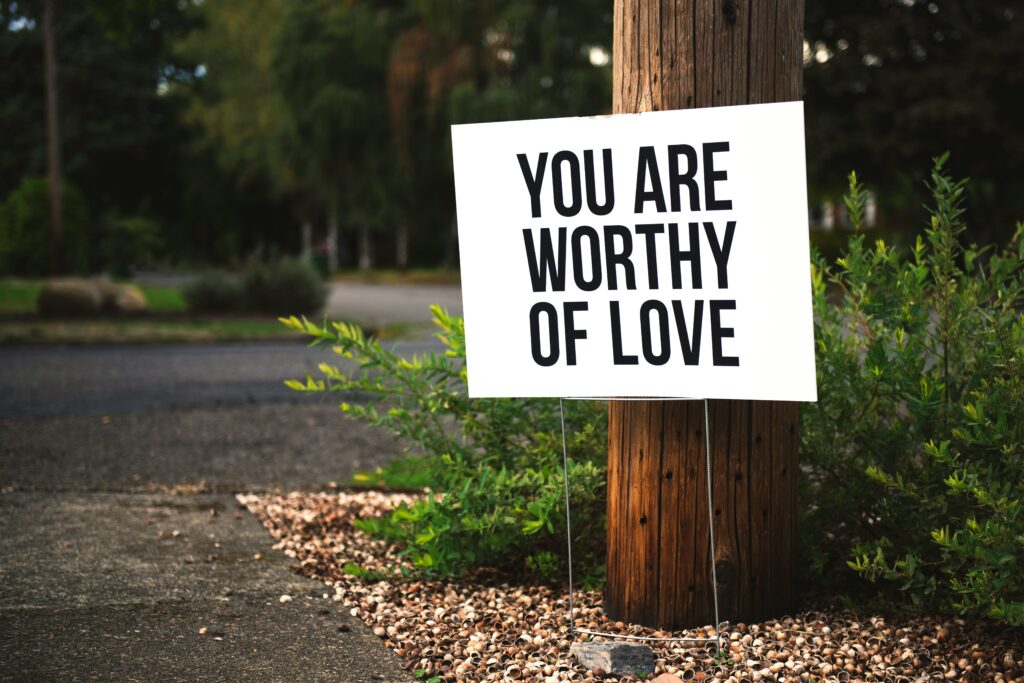
At the heart of healing from dating fatigue is the cultivation of self-compassion. This journey involves treating oneself with the same kindness and understanding one would offer a good friend. This transformative process enables individuals to view their experiences and perceived shortcomings not as failures but as opportunities for growth and self-discovery. Engaging in self-compassion practices, individuals can challenge the harsh inner critic that magnifies feelings of unworthiness and inadequacy.
By nurturing a compassionate inner dialogue, one learns to forgive themselves for perceived missteps in their dating life. They also begin to recognize that experiencing setbacks does not diminish their value or desirability as a partner. Activities such as journaling, meditation, and mindfulness exercises can serve as powerful tools in developing this kinder, gentler approach to self-assessment. These practices encourage a shift in perspective, allowing individuals to celebrate their strengths and embrace their imperfections with grace. Through self-compassion, one rebuilds the foundation of self-esteem, paving the way for a more positive and fulfilling approach to dating and relationships.
Embracing Vulnerability: The Key to Authentic Connections

Therapy provides a valuable space for individuals to explore the power of vulnerability within the realm of dating. Vulnerability, often perceived as a weakness, is in fact a cornerstone of building deeper and more genuine connections. Through the therapeutic process, individuals learn that allowing themselves to be seen—warts and all—is not only brave but also immensely attractive to potential partners who value authenticity. It's about stepping into the dating scene with an open heart and mind.
Being ready to share one's true thoughts, feelings, and desires without the armor of pretense or the fear of judgment.
This embrace of vulnerability can initially feel daunting, given the risk of rejection or misunderstanding. However, therapy aids in navigating these fears by highlighting the strength that comes from being vulnerable and the closeness it can foster with others. Clients are encouraged to approach dating with a willingness to be transparent about their needs, hopes, and dreams, as well as their uncertainties and insecurities. This level of honesty invites authentic interactions and paves the way for relationships built on mutual respect and understanding.
Moreover, embracing vulnerability helps dismantle the notion that one must be perfect to be lovable. It shifts the focus from performing to connecting, from impressing to sharing. In doing so, it opens the door to relationships that are rich in authenticity, making the journey of dating not just a quest for a partner, but an opportunity for personal growth and connection on a deeply fulfilling level.

Living with depression can be challenging at any time of year. For people struggling with their mental health, the summer months can bring a unique set of obstacles. It is implied that summer is for enjoying the warmth of the sun and summer festivities. However, for individuals battling depression, they may find it difficult to find that same sense of lightness and happiness. In this blog post, we will explore how therapies like Eye Movement Desensitization and Reprocessing (EMDR) and Internal Family Systems (IFS) can offer hope and relief for those suffering from depression, even in the midst of summer.
Understanding Depression in the Summer Sunlight
Summer often paints a picture of endless joy and outdoor celebrations. For those grappling with depression, this season can cast a shadow of heightened despair. The contrast between the societal expectation of summer bliss and the personal reality of inner turmoil can exacerbate feelings of isolation and inadequacy. During these warmer months, the pervasive cheerfulness can feel isolating to someone struggling internally. It can make the gap between their experience and that of others seem even wider. This disparity can intensify the sense of being out of place or left behind.
This may feel like the world around them seems to bask in a light that feels unattainable. Furthermore, the increased social activities and gatherings that characterize summer can serve as reminders of one's battles with social anxiety. It can add layers of complexity to an already challenging mental health landscape. The omnipresent cultural message that summer is a time for unfettered happiness can inadvertently place undue pressure on those who find their reality far removed from this idealized notion. This might turn what is meant to be a season of warmth and growth into a period of deepened struggle.
Celebrating Summer Festivities While Coping with Depression

Engaging in summer celebrations when dealing with depression may seem daunting. Despite that, small, intentional actions can create moments of joy amidst the struggle. Begin by acknowledging your feelings without judgment and permit yourself to participate in activities that feel manageable and comforting. Instead of succumbing to the pressure of attending large gatherings, consider smaller or more intimate settings where you feel safe and supported.
Creating a personal tradition or ritual that brings you peace and joy during the summer can also be a powerful step towards healing. This might be as simple as watching the sunrise, taking a walk in nature, or dedicating time to a hobby you love.
Additionally, harness the power of connection by reaching out to trusted friends or family members who understand your journey. Sharing your experiences with them can provide a sense of belonging and support, making the festivities less isolating. If direct participation feels too overwhelming, try to find alternative ways to engage with the spirit of summer. This can be planning a virtual get-together, or sitting outside to soak in the warmth and sights of the season.
Remember, it’s perfectly acceptable to decline invitations when you need time for yourself. Your well-being is paramount, and finding a balance that respects your mental health is crucial. Celebrating in a way that honors where you are on your journey can make the summer more enjoyable and meaningful.
An Overview of EMDR Therapy for Depression Treatment
EMDR (Eye Movement Desensitization and Reprocessing) therapy stands as a transformative approach in the field of psychological treatment, particularly for depression. This innovative method harnesses the power of bilateral stimulation, such as side-to-side eye movements or tapping. This is to facilitate the processing of distressing memories and emotions that contribute to depressive states. The therapy sessions are structured to allow individuals to revisit traumatic or triggering events in a safe and controlled environment.
Through guided eye movements led by a trained therapist, patients can re-examine these experiences without the intense emotional response that they typically elicit. The aim is to desensitize the individual to these distressing memories. By reducing their impact, it allows for the development of healthier coping mechanisms. As a result, EMDR has been effective in mitigating the symptoms of depression, providing a pathway toward emotional healing and resilience. This therapy offers a beacon of hope for those seeking to overcome the effects of depression. It offers a way to reclaim a sense of mental freedom and well-being.
Exploring Internal Family Systems (IFS) as a Depression Treatment

Internal Family Systems (IFS) therapy emerges as an innovative and compassionate approach to tackling the complexities of depression. This therapeutic model delves into the multifaceted nature of the psyche. It proposes that the mind consists of subpersonalities, or "parts," each with its unique perspectives, feelings, and memories. IFS aims to identify and understand these parts, especially how they interact and sometimes conflict, contributing to depressive symptoms. Central to IFS therapy is the concept of the Self. The Self is a core aspect of being that embodies qualities such as confidence, clarity, and compassion. Through IFS, individuals learn to access their Self and lead their internal system with these qualities. Doing this offers comfort and guidance to parts in distress.
The process of IFS therapy involves engaging with these parts in a nonjudgmental and curious way, recognizing their positive intentions, and understanding the burdens they carry. These burdens typically stem from past traumas or negative beliefs. By healing these parts, IFS helps to release their burdens, allowing for a more harmonious internal system. This can lead to significant decreases in depressive feelings, as individuals are no longer weighed down by the conflicts and burdens within their parts. Through fostering an internal environment of understanding, compassion, and support, IFS therapy holds the potential to transform the internal landscape. It can offer relief and a pathway out of depression's depths.
The Challenge of Treatment-Resistant Depression
Treatment-resistant depression presents a profound obstacle, making the journey toward mental wellness seem insurmountable for some. Defined by a lack of response to traditional treatments, such as medication and standard talk therapies, individuals facing this form of depression may feel trapped in a cycle of unsuccessful attempts to find relief. This condition demands a more nuanced understanding of the underlying causes of depression. It urges a shift toward innovative and personalized therapeutic approaches.
The complexity of treatment-resistant depression lies in the persistence of symptoms and the unique experiences and histories of those affected. Recognizing this challenge is crucial in exploring alternative paths to healing. Delving deeper into the psychological roots of depression with therapies like EMDR and IFS can potentially be beneficial. For those grappling with this daunting form of depression, it's essential to maintain hope and continue seeking options that address the specific dimensions of their distress.
Can EMDR and IFS Offer Hope for Treatment-Resistant Depression?

For individuals navigating the challenging waters of treatment-resistant depression, traditional approaches may not always lead to the desired shores of relief and recovery. In these instances, EMDR (Eye Movement Desensitization and Reprocessing) and IFS (Internal Family Systems) therapy stand out as potential lighthouses, offering guidance and hope. These therapies delve into the deeper layers of the psyche. They address the root causes of depression rather than just its surface symptoms. EMDR focuses on reprocessing traumatic memories that often underpin depressive disorders, allowing individuals to experience these memories in a less distressing way.
Meanwhile, IFS offers a path to understanding and healing the fragmented parts of oneself, fostering internal harmony and reducing depressive symptoms. By engaging with these innovative therapies, individuals with treatment-resistant depression may find avenues for change that were previously unexplored. The personalization and depth of EMDR and IFS can resonate with those who have felt misunderstood or untouched by other treatments. It provides a fresh perspective and renewed hope. As more research unfolds and clinical experiences accumulate, the potential of EMDR and IFS to significantly impact treatment-resistant depression becomes increasingly evident. It offers a glimmer of light to those who have long been in the shadows.
Practical Steps to Seek Help and Start Therapy
Taking action to address your depression by connecting with a professional can mark the beginning of your journey to wellness. To start, research therapists who specialize in depression and are trained in EMDR, IFS, or any therapy that resonates with you. Many resources are available online. This includes directories and reviews, to help you find a clinician who matches your needs and preferences. Don't hesitate to reach out and ask questions about their approach, experience, and how they've helped others with similar challenges.
Booking an initial consultation can provide insight into whether you feel comfortable with the therapist and their methodology. Remember, the therapeutic relationship is pivotal to the success of your treatment, so feeling understood and safe is essential. If the fit isn't right, it's perfectly fine to seek out another professional who better aligns with your expectations and needs.
Additionally, consider joining support groups, either in-person or online. Connecting with others facing similar struggles can offer validation, encouragement, and practical advice on navigating depression. Support groups also provide a sense of community and belonging, vital components in overcoming feelings of isolation.
Finally, be open to discussing your concerns with loved ones. While starting therapy is a personal decision, having the support of friends or family can bolster your resolve and provide an additional layer of support as you embark on this healing journey.

In the midst of a highly polarized political climate, many individuals across the nation find themselves grappling with heightened levels of voter anxiety and election anxiety. The constant barrage of news coverage, social media discussions, and political debates can leave individuals feeling overwhelmed, stressed, and uncertain about the future. As we approach the upcoming US Presidential Election, it is crucial to address the mental health impact of this turbulent period and explore strategies to mitigate voting anxiety for a restful night.
Understanding the Impact of a Polarized Political Climate on Mental Health
The heightened state of polarization in the United States' political sphere has undeniably ushered in a wave of increased anxiety amongst the electorate. Election anxiety is real, and it can induce everything from insomnia to panic attacks. Anxiety levels rise in the lead-up to an election, peak on election day, and then fall slightly afterward. This era, characterized by sharply divided opinions and relentless streams of often conflicting information, casts a long shadow over individuals' mental health. The relentless exposure to divisive rhetoric and the high stakes attached to political outcomes can foster a breeding ground for stress, fear, and uncertainty. Individuals may find themselves ensnared in a web of worry, attempting to decipher complex political narratives that seem to shift with the wind. This constant state of vigilance, of parsing through information to unearth truth from fiction, exacts a heavy toll on one’s peace of mind.
Amidst this tumultuous backdrop, the emotional and psychological ramifications are palpable. The ceaseless uncertainty and the barrage of polarized viewpoints can lead to a pervasive sense of unease. This can affect an individuals' ability to focus, make decisions, and maintain a sense of normalcy in their daily lives. This psychological strain is not merely fleeting. It seeps into the fabric of one's day-to-day existence, potentially exacerbating pre-existing conditions of anxiety. This all contributes to a heightened state of alertness that wears on the psyche.
In navigating this polarized landscape, the challenge then becomes one of finding a delicate balance - a means to remain informed and engaged without allowing the political climate to overwhelm one's mental equilibrium. It is a tightrope walk of consuming information judiciously, recognizing the impact of political polarization on mental well-being, and taking steps to safeguard one's inner peace amidst the clamor.
The Consequences of Turning Away from Political Engagement

While the allure of retreating from the political fray to shield one's mental health might seem appealing, such a decision carries its own set of repercussions. Individuals who choose to step back from political engagement, driven by a desire to evade the stress and anxiety that often accompanies election seasons, may inadvertently diminish their ability to influence decisions that affect societal and personal realms.
The act of disengaging not only distances them from critical information that could inform their choices and actions but also risks leaving a vacuum where their voices and perspectives are sorely needed.
In a society where every vote and every opinion can contribute to shaping the future, withdrawing from the electoral process can lead to a sense of disconnection and powerlessness. This feeling of being adrift, of lacking agency in the face of significant societal shifts, can exacerbate feelings of anxiety rather than alleviate them. Moreover, this withdrawal from political engagement forfeits the opportunity to be part of constructive change, potentially leaving individuals feeling even more alienated from their communities and the decisions that shape their lives.
The consequences of turning away from political engagement thus extend beyond the individual, affecting the broader fabric of society. When individuals opt out of participating in the democratic process, the diversity of voices that enriches and informs democratic debate diminishes. This reduction in engagement can lead to a less representative and inclusive political landscape, one in which the concerns and needs of various segments of society may not be adequately addressed or heard.
Striking a Balance: Engaging with Care
In the quest to find equilibrium amid the electoral storm, individuals are discovering innovative strategies to manage voting anxiety, ensuring that their engagement with the political process does not come at the expense of their mental health. One critical approach involves a discerning consumption of news, where the focus is on reliable, fact-checked media. This deliberate choice helps mitigate the overwhelming influx of information and the accompanying stress, providing a clearer, more grounded understanding of the political landscape. By limiting exposure to sensationalized narratives and seeking out sources that prioritize accuracy over alarm, individuals can remain informed without being inundated by the constant churn of the news cycle.
Furthermore, this careful engagement extends beyond media consumption to the very essence of civic participation. It encompasses a thoughtful approach to conversations around politics, recognizing the value of empathy and respect in dialogue. In recognizing the diverse perspectives within one's community, there emerges an opportunity to foster connections rather than divisions, even amidst differing viewpoints. This balanced engagement offers a pathway to navigate the charged political atmosphere with a sense of purpose and calm, rather than succumbing to the fray.
Through these measured steps, the act of engaging politically transforms into a practice of self-care, rather than a source of distress. It becomes a testament to the possibility of staying informed and involved, while also safeguarding one's mental and emotional well-being. In this way, individuals can contribute to the democratic process without compromising their peace of mind, navigating the complexities of the current political climate with intention and care.
Prioritizing Self-Care and Mental Well-being

In the whirlwind of election seasons, when the air is thick with debate and the pressure of political outcomes weighs heavily, the importance of self-care becomes paramount for individuals striving to maintain mental well-being. Engaging in self-care practices is not an act of indulgence but a crucial step in ensuring resilience and stability amidst external turmoil.
Individuals find solace in activities that ground them, be it through meditation that quiets the mind, deep breathing exercises that restore balance, or gentle yoga that reconnects the body and spirit. These practices serve as a sanctuary, offering a respite from the relentless pace of political discourse.
Moreover, the foundation of mental well-being is often fortified by the pillars of sleep, nutrition, and physical activity. A commitment to obtaining a restful night's sleep, consuming nourishing foods, and partaking in regular exercise forms a protective barrier against the stressors of the political climate. Such practices not only enhance physical health but are instrumental in mitigating feelings of anxiety and fostering a sense of inner peace.
In a time when external forces seem beyond one's control, prioritizing self-care and mental well-being becomes an act of empowerment. It is a deliberate choice to carve out spaces of tranquility and nurture resilience, ensuring that individuals remain steadfast, not only in the face of the current political maelan, but in all challenges that life may present.
Navigating Conversations and Relationships in a Polarized Environment

In an era where political divisions run deep, individuals often find themselves at a crossroads in conversations and relationships. This may lead to differing views which can easily escalate into conflict. Political party has become a strong social identity. Election anxiety is impacting friendships, families, and even personal mental well-being.
The art of maintaining harmony within these interactions lies in the cultivation of empathy and open-mindedness. It demands a willingness to listen actively, fostering an environment where divergent perspectives are not just tolerated but valued for the depth they add to the dialogue.
Setting healthy boundaries emerges as a critical skill, enabling individuals to engage in meaningful discussions without compromising their emotional well-being. By establishing limits on the nature and extent of political discussions, individuals can protect their mental space. This can ensure that exchanges remain respectful and constructive.
The pursuit of common ground is another vital strategy. It encourages focusing on shared values and goals, rather than fixating on the points of disagreement. This approach not only bridges divides but also strengthens connections, affirming that at the heart of many relationships lies a mutual desire for understanding and respect.
In navigating these interactions, individuals foster a climate of mutual respect. Conversations between these individuals are seen as opportunities for growth and connection. Through this mindful approach, relationships can thrive, even amidst a landscape marked by polarization. It can nurture a sense of unity in an otherwise divided world.
Moving Forward with Resilience and Hope

As society continues to traverse the choppy waters of the current political climate, the embodiment of resilience and hope stands as a guiding light for many. The cultivation of these qualities, deeply intertwined with the conscious efforts to manage mental health and prioritize self-care, illuminates a path forward through the tumult. It is within this journey that individuals discover the strength to face the uncertainties of the political landscape with a steadfast heart and a clear mind. Engaging with the world around them with empathy and thoughtful consideration allows for a compassionate dialogue that transcends division. It fosters a sense of community and shared purpose.
This commitment to navigating challenges with grace and optimism nurtures personal growth and contributes to the collective well-being of society. In embracing a future marked by resilience and hope, individuals can find solace in their ability to adapt and thrive. This can be regardless of the external environment. This forward movement, powered by a collective desire for understanding and connection, heralds a brighter, more inclusive future where dialogue and empathy pave the way for healing and unity.

Have you ever considered how our physical surroundings shape our feelings about ourselves
and others? How a lack of natural light can (negatively) impact our well-being? You’ve
probably considered all of this but haven’t taken steps to change your environment. To
inspire you to create a sanctuary of your own at home, today we’ll show you how to design a
sensory room for stress relief and calm. Stay tuned to learn how to transform your space into
a serene retreat that promotes relaxation and peace. With a few thoughtful changes, you can
make your home a place of tranquility.
What is a sensory room?
According to Edutopia, a sensory room is a therapeutic space with a variety of equipment that
enhances a person's senses through, among other things, special lighting, soothing music, and
engaging objects. This environment helps children relax and concentrate, making them better
prepared for learning and social interactions. Sensory rooms are versatile and can be used for
prevention, crisis de-escalation, and various therapeutic activities. Their main purpose is to
promote self-care, compassion, resilience, and recovery and offer a serene retreat where
individuals can relax and rejuvenate.
Often used in (but not limited to) therapy for children with communication issues, spectrum
disorders, sensory processing issues, or conditions like OCD, these rooms serve a broader
purpose. They create a safe, calming environment that helps with self-organization and
positive change.
In addition, sensory rooms offer both kids and adults with OCD or other abovementioned
conditions a structured, calming environment that reduces anxiety through soothing sensory
experiences and structured activities. Of course, while highly beneficial, a sensory room
shouldn’t be the only tool to rely on, especially in more dire cases. It’s very important to
recognize symptoms of OCD on time and treat them with the help of a professional for the
best results.

How to create a sensory room for stress relief and calm
A sensory room can be valuable for emotional and mental well-being with the right design.
That’s where we come in: we'll show you how to design your space carefully and
thoughtfully. We'll also explore how to subtly give your entire home the calming feel of a
sensory room without making it obvious, and you’ll learn how to transform your home into a
serene and soothing environment subtly.
Opt for natural lighting
Natural lighting in a sensory room can relieve stress and promote calm. Our suggestion: pair
natural light with neutral-colored curtains. That way, you can create an atmosphere that
fosters a sense of tranquility. Many homes suffer from a lack of natural light, have rooms
with zero windows, etc. To counter this, ensure that natural light reaches every corner of your
home, not just the designated relaxation space. Windows are your best ally, so always find
ways to let in as much natural light as possible. This simple yet effective approach can
transform your home into a more peaceful and inviting sanctuary.
If bringing natural light into every corner of your home isn't possible, ensure that your
sensory room – in other words, the main relaxation space – receives ample natural light.
Color green to the rescue! (nature’s tranquilizer)
Adding plants can significantly boost the relaxation appeal of any room. The color green –
nature’s tranquilizer – soothes both body and soul. There's a reason for the saying, "Green
rests the eyes." Just think about how we react to lush outdoor locations and associate this
color with peaceful moments in nature. Incorporating greenery into your space enhances its
aesthetic appeal and creates a calming environment. Plants help purify the air, reduce stress,
and promote well-being. So, bring the tranquility of the outdoors inside and transform your
home into a serene retreat.
Just don’t forget to water your plants now and then, depending on their individual needs.

How about some music?
Transform your sensory room into an audiophile's retreat with top-notch musical equipment
and relaxing ambient tunes. Music and sound play a crucial role in enhancing the calming
atmosphere of a sensory room. In truth, according to a study by the American Music Therapy
Association, music has been shown to significantly reduce stress and anxiety levels, making
it an ideal addition to any relaxation space. So, whether you prefer soothing ambient music
(our suggestion: Brian Eno’s Thursday Afternoon), 90s soul, or jazzy hip-hop, the right
soundtrack can significantly aid in relaxation. Also, consider incorporating white noise to
help unwind further.
Soundproofing the room (using solid curtains, thick rugs, or egg cartons) can help reduce
outside noise and further enhance the peaceful environment, making your sensory room a true
sanctuary for the senses.
Additional ideas to enhance your relaxation space
In addition to the basic tips mentioned above, we'd like to introduce some additional ideas for
creating a sensory room for stress relief and calm.
Add some bean bag chairs to your chill-out space
Bean bag chairs provide a cozy and secure seating option many love for comfort. With
various sizes and materials, finding one that suits your chill-out space the most is easy.
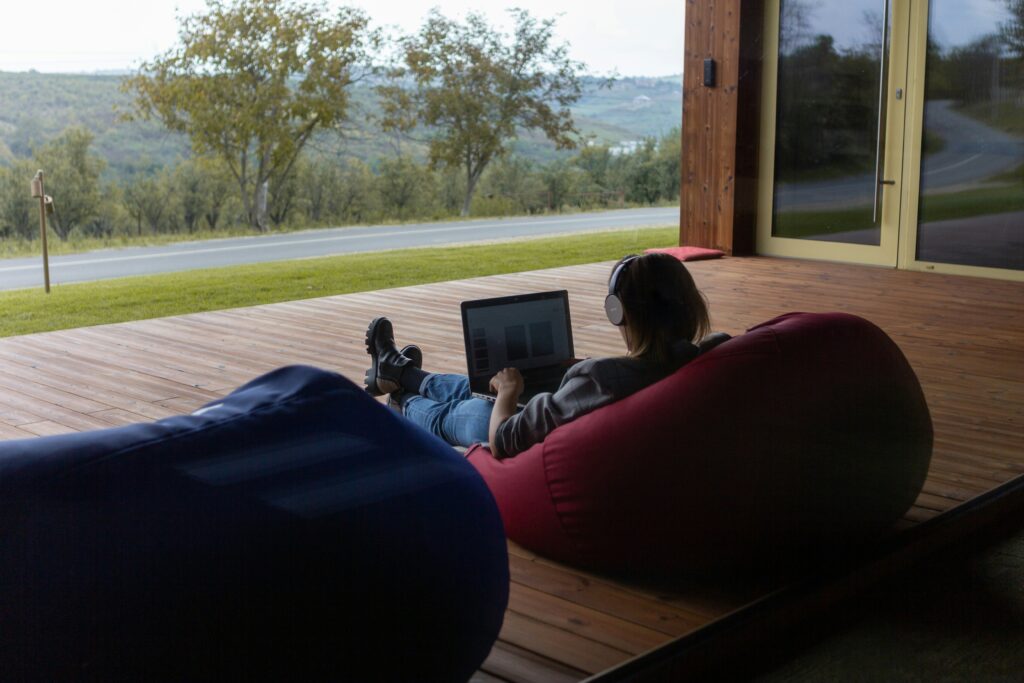
Talking about furniture…
Besides bean bag chairs, which we've already mentioned, consider choosing soft, plush chairs
and sofas for relaxation, and include floor cushions for interactive sensory play. Ensure all
furniture has rounded edges for safety, and select sturdy tables and desks at appropriate
heights, with adjustable options if needed. Add shelves or cabinets for storing sensory toys
and equipment, keeping everything organized and easily accessible. This approach ensures
your chill-out space is cozy, safe, and functional for everyone.
Bubble wall panels
You can empower your chill-out zone by adding bubble wall panels. These panels are known
for their soothing qualities, which many people nowadays appreciate. These panels create a
calming ambiance with gentle bubbles and soft lighting, making them a popular choice for relaxation spaces. Incorporating bubble wall panels adds a serene visual element and contributes to a peaceful atmosphere where you can unwind and destress effortlessly.
Conclusion
To summarize, you can do much to create and enhance your sensory room for stress relief
and calm. Whether you make the most of natural lighting, incorporate greenery in various
plants, or add stylish furniture like bubble wall panels, the key is designating a place to let go
of your troubles and dark thoughts and completely relax.

For many individuals in the LGBTQIA+ community, the journey of transitioning can be a tumultuous one. A journey filled with a range of emotions including anxiety and depression. The process of coming to terms with one's gender identity, undergoing hormone replacement therapy (HRT), and potentially having surgeries can be overwhelming. However, there is a therapeutic approach that may offer relief and help individuals feel more connected with their mind and body. It is called Eye Movement Desensitization and Reprocessing (EMDR) therapy.
Understanding the Emotional Terrain of Transitioning
Transitioning, for many within the LGBTQIA+ community, represents not only a journey of physical metamorphosis but also of profound emotional exploration and self-discovery. This path, while ultimately affirming, is often fraught with complex feelings that can challenge even the strongest among us. As individuals embark on this deeply personal quest to align their outer selves with their inner truth, they may confront a myriad of societal pressures and internal conflicts that can exacerbate feelings of anxiety and depression.
The emotional landscape of transitioning is intricate and varied. It can encompass the excitement and hope of becoming more authentically oneself. It also comes with the fear and uncertainty that change inevitably brings. This anticipation of achieving congruence in one’s gender identity can be shadowed by the dread of potential isolation, misunderstanding, and discrimination. These external pressures compound the internal struggle, making it difficult for some to navigate the process of self-acceptance and self-love.

Complicating this journey further are the obstacles to finding affirming support and understanding. Misconceptions and stigma about what it means to transition can leave individuals feeling isolated and invalidated. This can intensify feelings of anxiety and depression. The daunting task of explaining one’s identity to others, fear of rejection, and the constant battle against societal norms and expectations can be overwhelming, leading to a profound sense of loneliness and despair.
As such, the emotional terrain of transitioning is marked by highs and lows. This can range from moments of exhilarating clarity as well as painful doubt. The process requires incredible resilience and courage, as individuals navigate through this complex emotional landscape in pursuit of their true selves. While the journey is inherently challenging, understanding and acknowledging these emotional experiences are crucial steps toward healing and growth.
An Introduction to EMDR Therapy
Eye Movement Desensitization and Reprocessing (EMDR) therapy emerges as a compelling psychotherapeutic approach. It is particularly renowned for its efficacy in addressing trauma-related conditions. EMDR facilitates the processing of distressing memories and emotional pain by activating both hemispheres of the brain through bilateral stimulation. This bilateral stimulation can be guided eye movements or tactile tapping. This innovative method aims to assist individuals in reorganizing and reinterpreting memories and emotions that are at the root of their psychological distress.
Developed in the late 1980s, EMDR has rapidly evolved and garnered empirical support as a treatment for various manifestations of psychological distress. Its unique methodology involves eight distinct phases, guiding clients from history-taking to the processing of traumatic events, and culminating in the consolidation of adaptive coping mechanisms. During EMDR sessions, therapists work closely with clients to identify specific distressing memories. They also help to identify negative beliefs about themselves that are associated with these memories. Through the structured phases of EMDR, clients are encouraged to focus on these memories while simultaneously engaging in bilateral stimulation. This dual focus facilitates the brain's natural healing process. This allows for the emotional charge of the memory to be diminished and for a more adaptive, empowering narrative to emerge.
Importantly, EMDR therapy goes beyond mere symptom relief, striving to foster a holistic sense of healing. Clients often report a decrease in distress related to specific memories and an overall improvement in their well-being. This gives room for an increased capacity to engage in their lives more fully. By directly targeting the underlying emotional impact of traumatic and distressing experiences, EMDR holds promise as a transformative therapeutic modality, especially for those contending with the profound emotional complexities associated with transitioning. Through its structured yet flexible approach, EMDR offers a pathway to healing that is both scientifically grounded and deeply attuned to the individual's psychological landscape.
EMDR in Action: Healing from Gender Dysphoria

EMDR therapy emerges as a vital resource for those grappling with gender dysphoria. Gender dysphoria is a condition characterized by profound discomfort due to a discrepancy between one’s experienced gender and the gender assigned at birth. This discomfort often manifests as severe anxiety, depression, and a disconnection from one’s body. In navigating these turbulent emotions, EMDR offers a promising avenue for healing and self-discovery.
Through its structured approach, EMDR targets the distressing memories and negative self-perceptions that underpin gender dysphoria. Individuals may harbor deep-seated beliefs of not belonging, being misunderstood, or feeling inherently flawed due to their gender identity struggles. EMDR engages the brain’s natural healing processes, allowing individuals to reprocess these painful experiences and beliefs. By focusing on specific memories or thoughts while receiving bilateral stimulation, clients can start to dissociate the negativity, shame, or fear attached to these memories. It can pave the way for more affirmative and empowering narratives about their gender identity.
The therapy’s unique ability to delve into the layers of emotional pain and cognitive dissonance that accompany gender dysphoria makes it an invaluable tool. It assists in alleviating the acute distress associated with living in a body that feels incongruent with one’s gender identity. As these individuals process their experiences through EMDR, they often find that the emotional charge of their distressing memories diminishes. This reduction in emotional intensity can lead to a significant decrease in anxiety and depression levels. It can ultimately contribute to a more harmonious internal experience.
As part of a comprehensive treatment plan, EMDR facilitates a journey towards self-acceptance and body congruence. It helps individuals in the LGBTQIA+ community to not only reconcile their past experiences with their gender identity but also fosters a stronger, more positive connection with their bodies and selves. Through EMDR, the path to healing from gender dysphoria becomes more accessible. It, empowers individuals to embrace their true identity with confidence and peace.
The Role of EMDR in Overcoming Anxiety and Depression
EMDR therapy stands out as a potent intervention for mitigating the profound impacts of anxiety and depression. This is particularly poignant for those undergoing the transition process. This therapeutic modality dives deep into the psyche, addressing the root causes of these mental health challenges. Through the distinctive mechanism of bilateral stimulation, EMDR aids individuals in accessing and processing the distressing memories and entrenched negative beliefs that fuel their emotional turmoil.
In the context of transitioning, anxiety and depression often stems from accumulated life experiences, societal rejection, or internalized stigma. Each of the forementioned can create a pervasive sense of being trapped or misunderstood. EMDR facilitates a re-examination and restructuring of these painful narratives, allowing for a transformative healing journey. By engaging the brain's innate capacity for resilience and recovery, it offers a path through which clients can gradually diminish the intensity of their emotional pain. It makes room for more adaptive, positive perspectives on their identities and experiences.
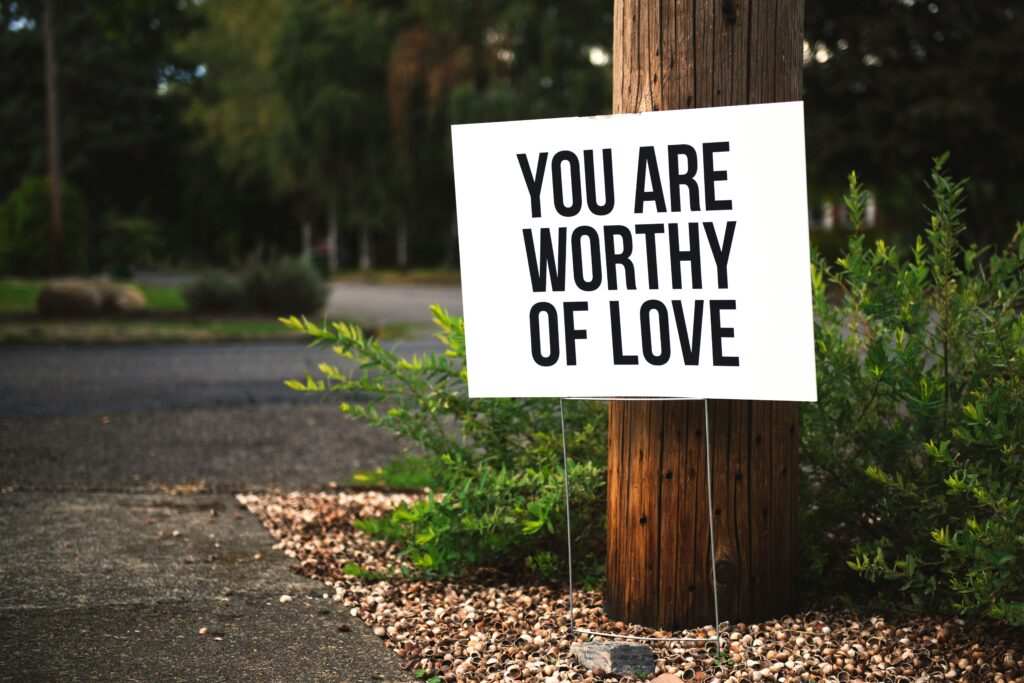
The therapy’s focused approach enables individuals to dismantle the complex layers of anxiety and depression. This helps to foster a sense of empowerment and renewed self-compassion. As these individuals progress through the phases of EMDR, they often report a significant alleviation of their symptoms. People begin to experience an enhanced ability to cope with stress and embrace their true selves with greater confidence.
EMDR's role in combating anxiety and depression is thus pivotal. It offers not just a means to cope but a route to thriving. Its application within the transitioning journey underscores a commitment to holistic well-being. Doing this, acknowledges the intrinsic link between resolving past traumas. It truly fosters a future where one's gender identity can be lived fully and authentically.
Finding Support and Embracing EMDR Therapy
In the pursuit of healing and self-discovery during transitioning, the role of supportive therapy cannot be overstated. It is critical to connect with therapists who possess a deep understanding of gender diversity. It is just as important that they exhibit a genuine commitment to creating a respectful and welcoming therapeutic environment. EMDR therapy has the profound potential to address the psychological distress associated with transitioning. This requires navigating with a therapist is skilled in its application and sensitive to the nuances of the LGBTQIA+ experience.
Choosing the right therapist involves seeking out professionals who are conversant with EMDR and actively affirm and celebrate LGBTQIA+ identities. Such therapists are instrumental in fostering a space where individuals can explore their feelings and experiences without fear of judgment or misunderstanding. They play a crucial role in facilitating the therapeutic process, guiding individuals through the nuanced phases of EMDR with empathy and understanding.
Embarking on EMDR therapy with a supportive therapist opens up avenues for profound emotional healing and growth. This therapy is done in a manner that is both empowering and transformative. It enables individuals to work through the layers of anxiety, depression, and trauma that transitioning can unearth. The journey with EMDR therapy is one of reclamation, allowing individuals to rewrite their narratives with strength and authenticity.
The decision to seek out EMDR therapy, paired with the support of a knowledgeable and affirming therapist, marks a significant step towards achieving psychological well-being and a deeper alignment with one’s true self. It underscores the importance of supportive relationships in the healing journey, reminding individuals that they do not have to navigate this path alone.
When it comes to self care, finding a welcoming and inclusive environment is essential for relaxation and rejuvenation. For members of the LGBTQ+ community, this is especially important as they deserve to feel safe and accepted while taking a break from the stresses of everyday life. Fortunately, there are plenty of destinations on the East Coast that cater to LGBTQ+ travelers, offering a welcoming and inclusive environment for self care escapes. Here are the top 5 LGBTQ+ welcoming spots on the East Coast that are perfect for a rejuvenating getaway.
Provincetown, Massachusetts - A Haven of Arts and Acceptance

Nestled at Cape Cod's northern tip, Provincetown beams as a beacon of creativity, welcoming a vibrant community of artists, writers, and LGBTQ+ individuals. This picturesque town is a tapestry of cultural richness. It is where every street and corner tells a story of acceptance and diversity. Its unique charm is amplified by an array of art galleries, eclectic boutiques, and cozy cafés, each offering an experience steeped in inclusivity. Provincetown thrives as a cultural hub, inviting visitors to immerse themselves in its artistic ambiance and liberal spirit.
The town is famed for its dynamic LGBTQ+ events that draw visitors from across the globe. The Provincetown International Film Festival is a highlight, showcasing diverse stories through the lens of talented filmmakers. Meanwhile, the Provincetown Carnival erupts in a kaleidoscope of colors, celebrating diversity with parades, costumes, and performances that embody the town's inclusive ethos. These events, among others, weave a sense of community and celebration, making Provincetown an unmatched destination for those seeking solace and self-expression.
The embrace of the LGBTQ+ community here is palpable, with venues and spaces designed to foster connections, creativity, and relaxation. Whether one is seeking inspiration through art, the joy of a shared celebration, or a quiet moment of reflection by the sea, Provincetown extends an open invitation. Its commitment to creating a safe and accepting environment encourages visitors to explore their identities. engage with like-minded individuals, and indulge in the town's cultural offerings at their own pace.
In Provincetown, every day is an opportunity to experience the vibrancy of life without reservation. Its inclusive atmosphere not only nurtures self-care but also champions the importance of community, making it a sanctuary for anyone looking to replenish their spirit amidst a backdrop of artistic and cultural abundance.
New York City, New York - The Melting Pot of Diversity

New York City stands as a dynamic hub of diversity, offering an open and inviting atmosphere for LGBTQ+ individuals in search of self care and liberation. The city's vibrant energy and boundless inclusivity make it an ideal destination for those wishing to immerse themselves in an environment where every identity is celebrated. With an array of neighborhoods each showcasing their unique flavor, the city is a mosaic of cultures and expressions.
Hell's Kitchen, another emblematic locale, pulsates with an eclectic nightlife and diverse culinary scene that cater to all tastes and persuasions. Its theaters and comedy clubs offer spaces where laughter and camaraderie flourish. It invites visitors to partake in the joy of shared experiences.
Moreover, New York City's commitment to LGBTQ+ rights and visibility is evident in its annual Pride celebrations. The city transforms into a dazzling spectacle of love, resilience, and unity. The streets come alive with parades, festivals, and art installations that showcase the strength and beauty of the community.
Amidst the skyscrapers and the relentless pace of the city, there exist countless opportunities for connection, reflection, and renewal. From tranquil parks to avant-garde galleries, New York City provides a backdrop against which individuals can explore aspects of identity, culture, and self-care, all within a framework of inclusivity and respect. Here, the spirit of diversity fuels not just a sense of belonging. It is also a profound celebration of life's multifaceted expressions.
Rehoboth Beach, Delaware - A Quiet Escape
Rehoboth Beach stands out as a tranquil haven, offering a gentle reprieve from the hustle and bustle often found in larger cities. This coastal gem in Delaware is renowned for its inviting atmosphere, catering to those in the LGBTQ+ community seeking peace and relaxation. The allure of Rehoboth Beach lies in its simplicity and the quiet acceptance found within its community. The broad, sandy beaches provide a perfect setting for meditation, sunbathing, or reading a favorite book. It allows visitors to reconnect with themselves in a serene environment.
The town's boardwalk, with its old-world charm, is lined with family-owned shops, inviting eateries, and galleries that showcase local art, reflecting the town's inclusive spirit and support for LGBTQ+ individuals. Beyond the beach, Rehoboth Beach is home to a variety of accommodations and venues that proudly serve the community. It offers everything from cozy bed and breakfasts to vibrant nightlife options. These establishments not only provide a safe space for travelers but also foster a sense of belonging and connection among guests.
For those looking to indulge in self-care, the town's wellness centers and spas offer a range of services designed to pamper and rejuvenate. Whether it's a relaxing massage, a yoga class overlooking the ocean, or a leisurely bike ride through scenic trails, Rehoboth Beach provides ample opportunities for self-reflection and renewal. This destination embodies the essence of a quiet escape, where one can easily find solace and joy in the natural beauty and warm community spirit.
Asheville, North Carolina - The Gem of the Blue Ridge

Asheville, North Carolina, offers an enchanting retreat nestled amidst the Blue Ridge Mountains' verdant landscapes. This city, known for its welcoming spirit and eclectic charm, presents an ideal self care sanctuary for LGBTQ+ travelers. Asheville's vibrant arts scene is a testament to the city's culture of inclusivity, with galleries, live music venues, and theaters showcasing the creative talents of local artists and performers. The city's commitment to celebrating diversity and fostering an open community can be felt in every corner. It makes it a place where visitors can freely express themselves and find solace.
Food enthusiasts will revel in Asheville's burgeoning culinary scene. This features an array of farm-to-table restaurants and food festivals that cater to every palate. The city's emphasis on sustainability and local produce adds a meaningful dimension to the dining experience. It invites guests to indulge in flavors that are both delightful and ethically sourced. Moreover, Asheville's numerous craft breweries offer a cozy ambiance for socializing and sampling innovative brews in settings that are both inviting and inclusive.
For those seeking adventure and rejuvenation in nature, the surrounding Blue Ridge Mountains provide a spectacular backdrop for outdoor activities. Hiking trails wind through scenic vistas, offering breathtaking views and moments of reflection. The area's natural hot springs are a must-visit, offering a unique opportunity to relax and rejuvenate in a serene, natural setting.
Asheville's friendly community and array of wellness-oriented activities make it a haven for LGBTQ+ travelers. Especially people looking for a self care escape. From engaging with the arts to enjoying the natural beauty and culinary delights, Asheville provides a diverse and welcoming environment for all who visit. This ensures a memorable experience that nurtures both body and soul.
Key West, Florida - Tropical Inclusivity

Key West is a beacon of warmth and acceptance, casting a wide embrace over anyone seeking a tropical retreat that champions inclusivity. This island paradise is distinguished by its laid-back demeanor and a vibrant community spirit. It makes for an idyllic spot for LGBTQ+ individuals looking for a mix of adventure, relaxation, and self-care. The eclectic mix of cultures and histories has woven a rich tapestry that celebrates diversity at every corner. This includes the bustling Duval Street to the quiet, palm-lined neighborhoods.
The town's legendary openness is reflected in its variety of events and festivals specifically catering to the LGBTQ+ community. This includes the famous Key West Pride and the whimsical Fantasy Fest. It fills the streets with a riot of colors, music, and costumes, emphasizing unity and freedom of expression. Key West's commitment to creating a welcoming atmosphere is evident in its array of accommodations, eateries, and bars that not only welcome but celebrate LGBTQ+ guests.
For those in pursuit of tranquility and natural beauty, Key West does not disappoint. The island is surrounded by the clear blue waters of the Gulf of Mexico and the Atlantic Ocean. It offers endless opportunities for snorkeling, sailing, and kayaking in peaceful settings that encourage introspection and connection with nature. The lush, tropical landscape and the gentle rhythm of island life provide a soothing backdrop for mindfulness and rejuvenation.
Moreover, Key West's historical charm, from the Hemingway Home and Museum to the iconic Southernmost Point buoy, adds layers of exploration and discovery to the visit. It enriches the self-care journey with cultural and historical insights.
In Key West, the spirit of inclusivity permeates every experience. It invites LGBTQ+ travelers to unwind and celebrate in a setting that respects and honors their identities. It stands as a testament to the power of community and the importance of spaces that prioritize openness, acceptance, and the well-being of every individual.